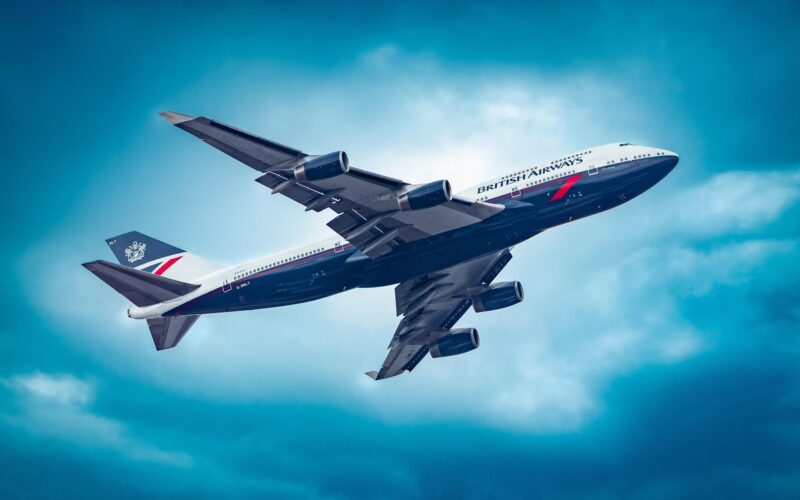A failure of all engines is perhaps one of the scariest things that can happen up in the air. Yet this is exactly what happened to Speedbird 9 when all four engines powering up the British Airways Boeing 747 jet flamed out. Despite that, British Airways Flight 9 remains a tale of hope in a situation in which no one wants to find themselves.
Speedbird 9 takes off to a clear dark night
On the evening of June 24, 1982, a British Airways Boeing 747-200 with 263 people on board, including 248 passengers and 15 crew members, took off from Kuala Lumpur (SZB), Malaysia. The flight crew consisted of Captain Eric Henry Moody, Senior First Officer Roger Greaves, and Senior Engineer Officer Barry Townley-Freeman.
Speedbird 9 was heading towards Perth, Australia, where it was supposed to land some five hours later. It was already the third leg in a longer route from London, UK, to Auckland, New Zealand, via Bombay, Kuala Lumpur, Perth, and Melbourne.
“Good evening, ladies and gentlemen. This is your Captain speaking. We have a small problem. All four engines have stopped. We are doing our damnedest to get them going again. I trust you are not in too much distress.” – Captain Moody.
The aircraft settled into the cruise at 37,000 ft, the en-route weather forecast was good, and it looked as though the flight was going to be uneventful. False impression.
The first sign that Flight 009 was not going to be uneventful after all appeared around 20:40 (Jakarta time), when the Jumbo Jet was soaring above the Indian Ocean, south of Java. Captain Moody, who was taking a stroll, was summoned back to the cockpit. There, windscreens were ablaze with an intense display of a weather phenomenon called St Elmo’s fire ‒ a discharge of static electricity.
A couple of minutes later, the engine trouble began. “Engine failure number four!” Townley-Freeman called aloud. In a few minutes, all four Rolls-Royce RB211 engines began surging and flamed out.
Mayday misunderstood & the iconic passenger announcement
The fact that all four can fail mid-flight came as a shock and disbelief.
When the flight crew squawked 7700, Jakarta Area Control did not understand the message of the Mayday call. The air traffic control thought Speedbird 9 had only lost one, the number four, engine. Luckily, a Garuda Indonesia plane nearby heard and communicated the message to them.
Meanwhile, passengers on board the City of Edinburg, as this particular Boeing 747 was called, heard the Captain’s announcement which has since earned the status of iconic understatement.
“Good evening, ladies and gentlemen. This is your Captain speaking. We have a small problem. All four engines have stopped. We are doing our damnedest to get them going again. I trust you are not in too much distress,” Captain Moody told the passengers.
Speedbird 9 glided with no engine thrust for approximately fifteen minutes during which time the Boeing 747 descended from 37,000 ft to 12,000 ft altitude.At 20:56, the flight crew was finally able to restart the engines, although engine number two later surged again and was shut down until the end of the flight.
Once the flight finally reached Jakarta’s Halim Perdanakusuma International Airport (HLP), Indonesia, landing proved to pose additional difficulties for the pilots. While the weather in Jakarta was supposed to be good and clear, the crew could barely see anything through their windscreen and had to rely on an instrument approach. Despite all those difficulties and against all odds, the flight landed safely, leaving all 263 people on board safe and sound.
So how did the pilots of British Airways Flight 9 avert the flight landing on the biggest aircraft crashes list? Turns out, it was the turning off the engines that did the trick.
It took two days until investigators found it was volcanic ash that caused the aircraft’s strange behavior. British Airways Jumbo Jet flew through a dust cloud from the Mount Galunggung volcanic eruption, which took place 110 miles south east of Jakarta.
Can aircraft fly without engines?
The incident gave a definitive answer to anxious flyers about what happens if all aircraft engines suddenly break when the plane is in the air. While the situation is by no means ideal, without engine thrust even such a heavyweight jet like the Boeing 747 can actually glide for a bit. Aircraft have different glide ratios that describe the distance they cover while losing 1,000 feet of altitude. In the case of BA Flight 9, the Boeing 747-200 glide ratio is 15:1, meaning that the plane could cover approximately 93 nautical miles or 150 kilometres from the cruising altitude.

